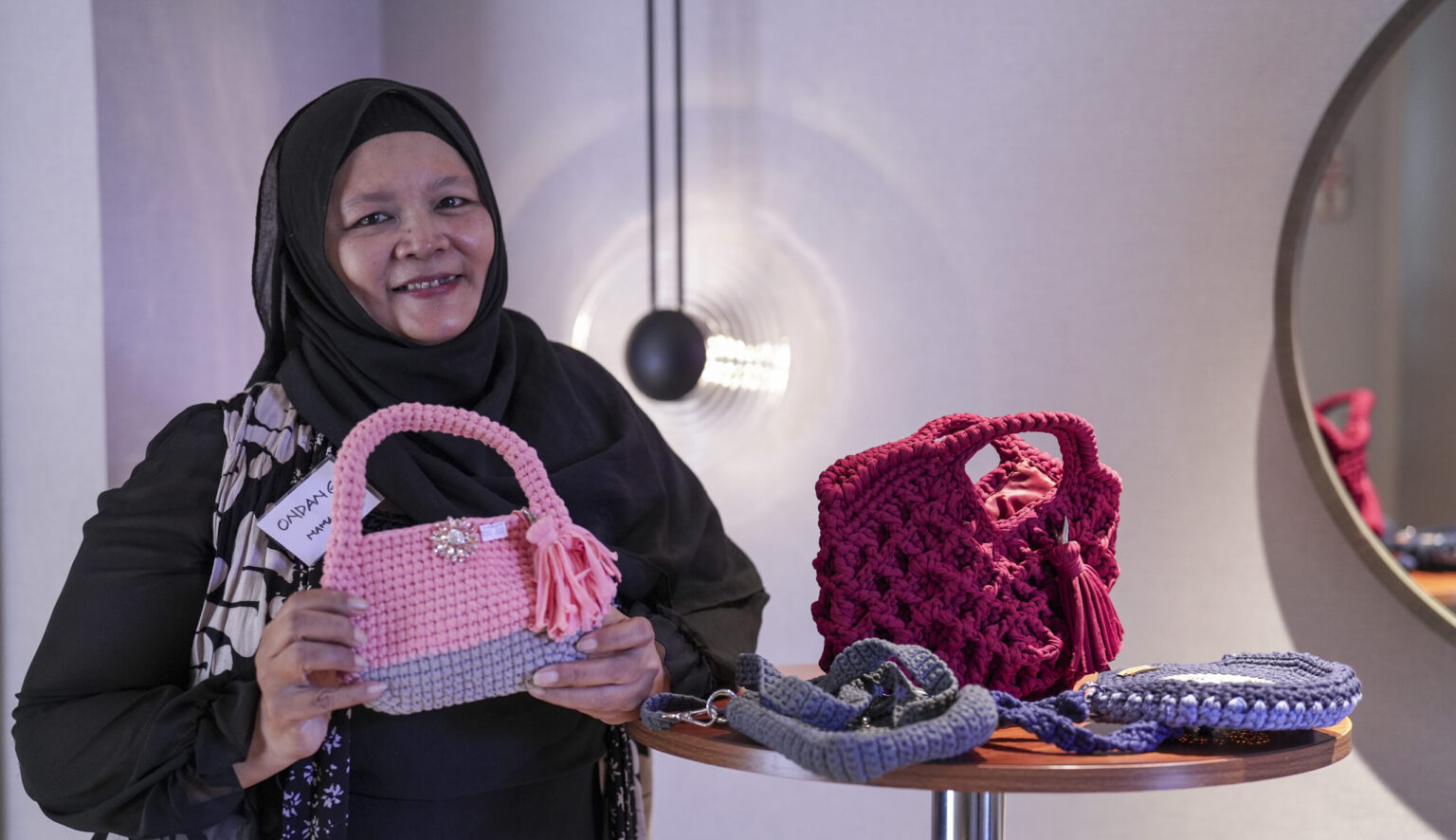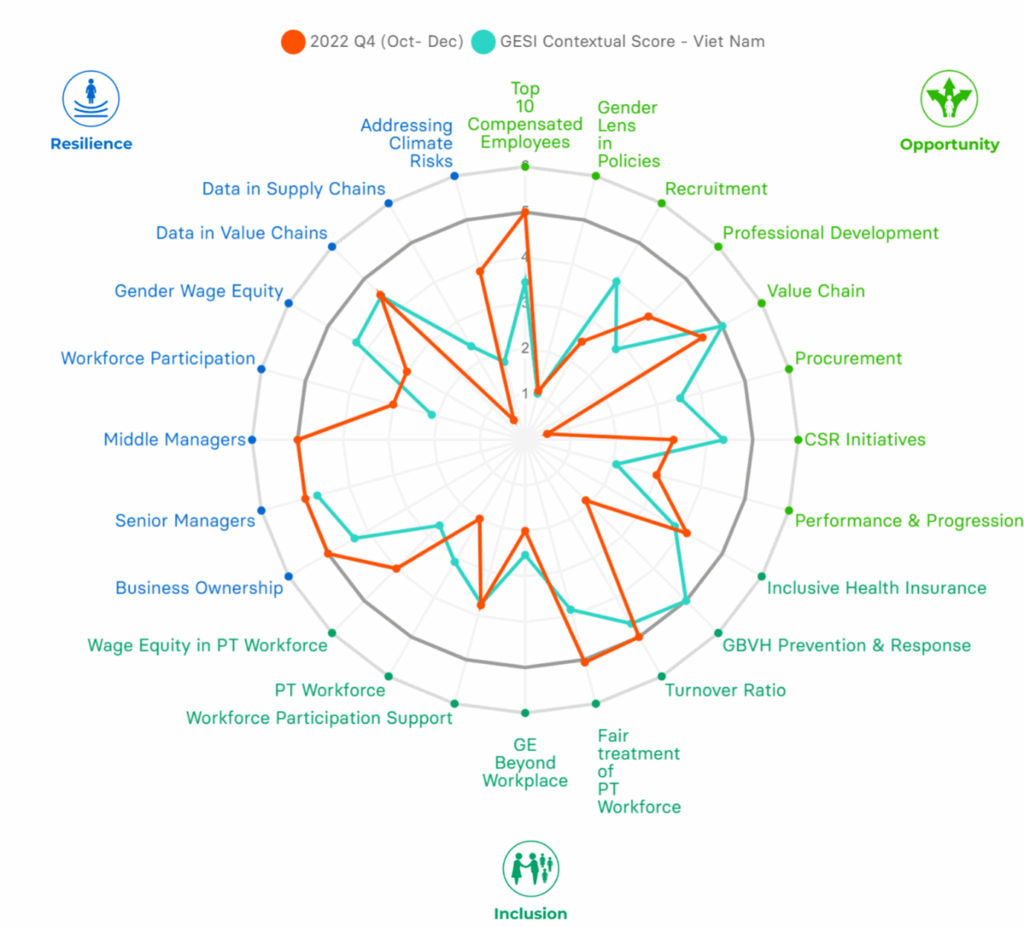
Sweef Capital’s Gender ROI™ tool helps companies and investors evaluate and increase gender equality and inclusion across their operations. It is a tool to help companies understand how gender inclusive practices can unlock financial value in addition to social inclusion.
At a recent workshop hosted by Sweef Capital and KINETIK, start-ups gathered to explore how this tool could help them.
What is Gender ROI™ and why does it matter?
Most businesses today agree that gender equality is important. But very few know how to measure it, let alone improve it.
That’s where the Gender ROI™ tool (which stands for Resilience, Opportunity and Inclusion) comes in. Developed by Sweef Capital, this tool helps companies evaluate their gender inclusivity, track progress over time, build 100-day action plans and long-term strategies, and demonstrate their commitment to investors, funders, and communities.
The Gender ROI™ aligns with the 2X Criteria, a set of investment standards developed by development finance institutions as part of a global initiative to mobilise capital for women’s economic empowerment.
The tool is used throughout Sweef Capital’s investment process, from identifying potential to tracking progress and measuring impact.

Participants at a KINETIK Sweef Entrepreneurs Program workshop. Photo: JEFRI TARIGAN
“One challenge we often face is that ‘gender inclusion’ feels abstract,” Sweef Capital’s Head of Impact Measurement and Management and Strategic Partnerships, Bri Losoya-Evora, told the workshop.
“Many think it is just about a women-owned business, and while that is important, it is not the whole picture. We look beyond ownership.”
It digs deeper, asking questions such as: Are women involved in decision-making? Do your products meet women’s needs? Are your supply chains inclusive?
A closer look at the framework
Gender ROI™ evaluates a company across two main areas:
The 4 Enterprise dimensions look at all the levels at which value for women can be unlocked:
- Leadership: Are women represented in ownership and senior roles?
- Workforce: Are hiring, retention, and promotion practices inclusive?
- Value chains: Are suppliers and customers gender-inclusive?
- Society: Does the company promote gender equality to improve women’s well-being?
The enterprise dimensions are measured across three outcome pillars:
- Resilience: Does women’s economic empowerment enable them to access resources and participate in decision-making that affects their lives and families?
- Opportunity: Do women have equitable access to economic participation?
- Inclusion: Are systemic barriers being addressed?
This is assessed through 24 indicators, from wage equity and GBV (Gender-based Violence) policies to climate resilience and gender-responsive procurement. Each indicator is scored on a 0–5 scale, with bonus points for businesses going above and beyond (especially impressive for micro and small enterprises).
“It’s not about perfection, it’s about progress,” Ms Losoya-Evora told the workshop.
Gender ROI™ assessment results

The online tool, available for free at app.equilo.io/ROI, provides data visualizations of the assessment results, such as this spider chart.
Avoiding the “Gender Halo” effect
A common mistake is thinking your business is already inclusive just because women lead it or have a lot of women customers. Ms Losoya-Evora calls this the “gender halo” effect.

A KINETIK Sweef participant showcases a mushroom-based cardholder, an eco-friendly, leather-free innovation made from mycelium. Photo: JEFRI TARIGAN
The Gender ROI™ tool pushes past this kind of thinking by asking honest, sometimes uncomfortable questions, such as whether women are being promoted, whether your marketing avoids stereotypes, and whether your workplace feels safe.
By embedding gender equity into operations, businesses can tap into new markets, attract diverse talent, and build trust with customers and investors.



